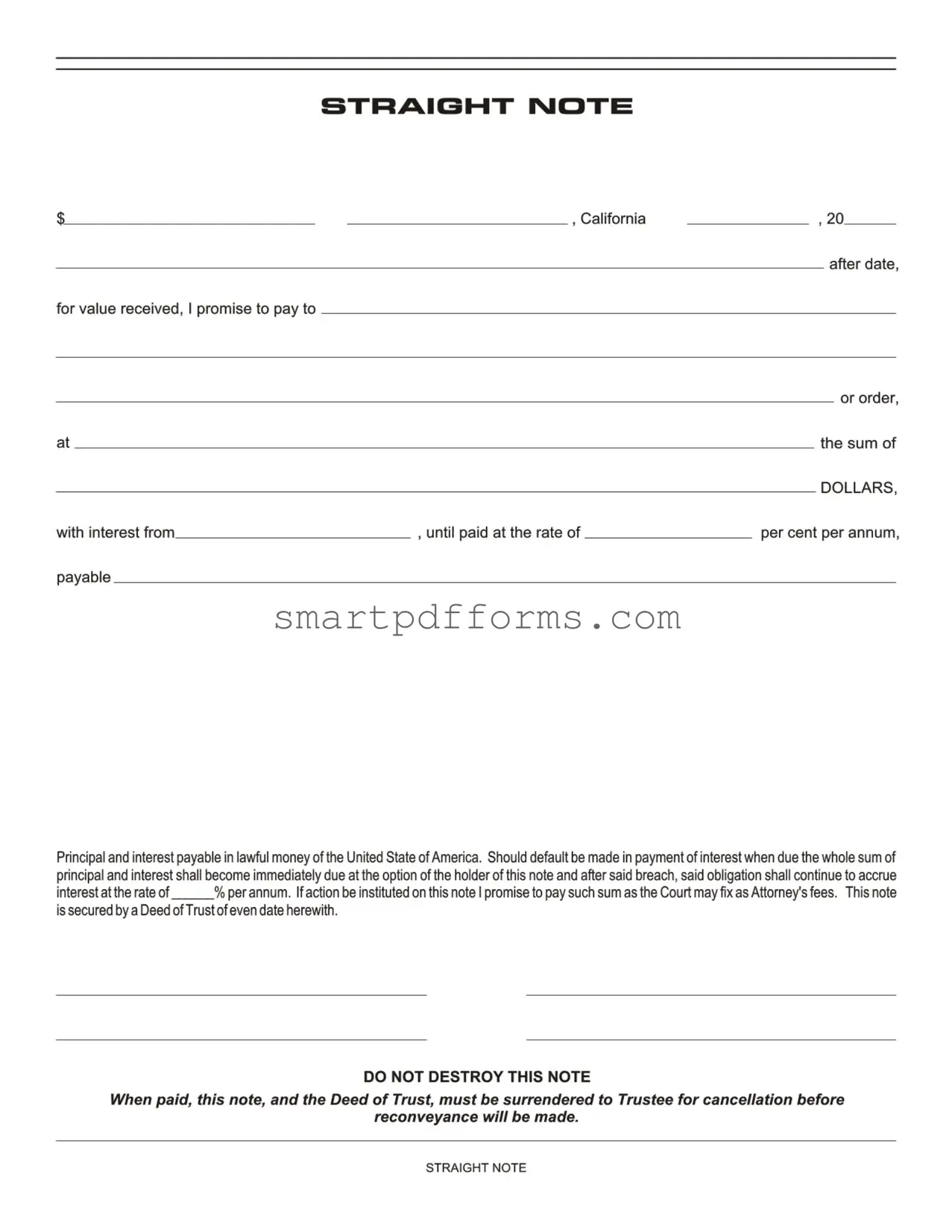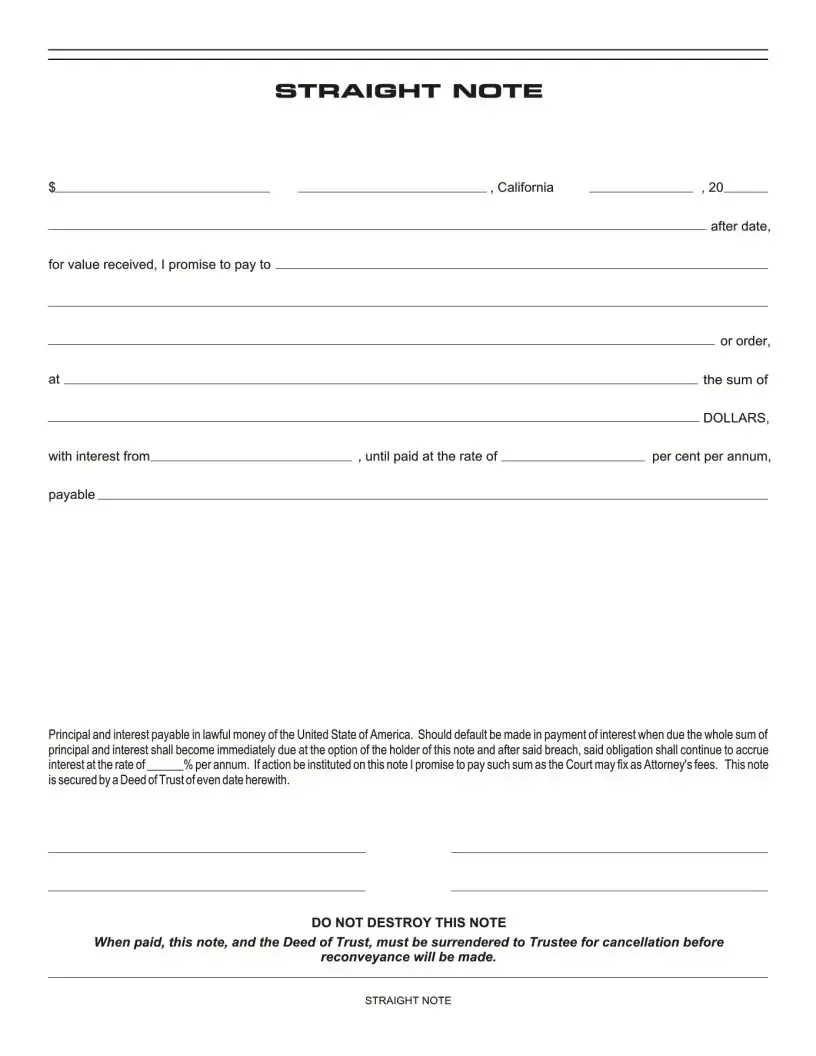Blank Straight Note PDF Template
The Straight Note form, particularly utilized in California, represents a binding commitment wherein the borrower promises to repay a specified sum of money, plus interest, to the lender or the lender's assignee. This financial instrument outlines the terms of repayment, including the interest rate and the conditions under which the full amount becomes due immediately, such as in the case of default on interest payments. To secure the obligation, this note is often accompanied by a Deed of Trust, ensuring both parties' interests are protected.
Ready to commit to a straight-forward repayment plan? Ensure your financial dealings are in order by filling out the Straight Note form by clicking the button below.
Make This Document Now

